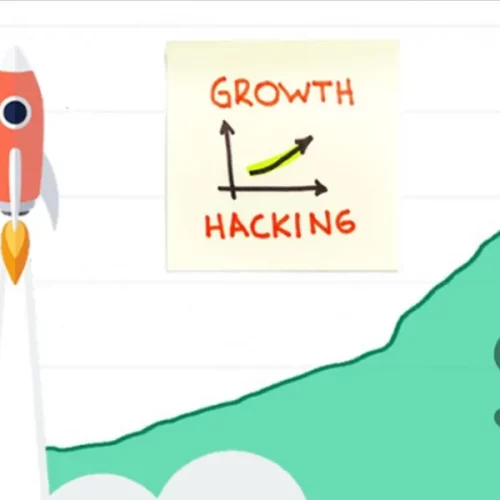
Effectively identifying target customers helps businesses better understand customers, thereby building appropriate marketing campaigns to optimize conversions and increase profits.
It is difficult for businesses to increase sales if they do not know who their target customers are, what needs or problems they are facing, and what solutions they are looking for.
Therefore, target customers are one of the important factors that businesses need to identify and analyze carefully before building a complete marketing or business strategy.
So what is the specific target customer? How to effectively analyze target customers to optimize conversions and increase revenue?
Join us to learn more about target customers in this article.
What is the target customer?
Target customers are a group of customers in the target market segment that the business is targeting. This target customer group is the group of customers who truly have needs and are able to pay for the business’s products/services.

Target customers are also the group of customers that businesses want to reach through their marketing activities and campaigns.
This is a group of customers who are more likely to be interested in the business’s products and services than other customer groups. As for the target customer group, they share common characteristics such as: demographics, education level, income, psychology and behavior,…
When approaching the target customer group, businesses will not need to try too hard to convince them to buy their products or services, because they already have a need to use the business’s products from before.
All businesses need to do is make them more aware of their product brand and provide effective customer service .
Distinguish between target customers and target markets
Often, many people may confuse the concepts of target customer and target market. So what is the difference between a target customer and a target market?
Target market is the segmentation of customers into certain groups in accordance with the strategy and goals of each business. In other words, the target market includes potential customers that businesses aim to increase sales revenue.
On the other hand, target customers are a specific group of customers that businesses want to target and convey marketing messages and advertising programs.
In general, target customers will be in the target market segment that the business is aiming for.
The biggest difference between target market and target customer is: The target market will be where the business sells products to increase profits, and the target customer will be the group of customers that the business wants to reach. to convey marketing and advertising messages, with the purpose of increasing brand awareness and increasing conversion rates.
Read more : What is a target market & 6 steps to identify and implement effectively for every Business
Why do businesses need to identify target customers?
Analyzing target customers will help businesses possess the following benefits:
Understand customers
When businesses clearly understand their target customer group, they can put themselves in their customers’ shoes and look at the problem from their perspective.
When analyzing target customers, businesses can identify the problems customers face, the specific difficulties they have to overcome, and what solutions they expect to solve those problems. that problem. From there, businesses can offer appropriate solutions and bring many useful values to their potential customer group.

Improve product/service quality
When analyzing target customers, businesses can understand customers and know what problems they are facing, thereby making appropriate improvements to their products/services to meet their needs. their.
Analyzing target customers also helps businesses understand what customers need, what features the business’s products or services are not good enough to solve their problems so they can research and develop them. Develop better quality products.
Optimize campaigns and marketing activities
When you understand what your target customers want and need, businesses will be able to build effective marketing campaigns to optimize costs and increase conversion rates.
Besides, businesses can save maximum costs on marketing activities when analyzing their target customers carefully because the business clearly understands which customers they need to target. How and what specific characteristics do they have?
Identify competitive advantage
By focusing on a specific target customer group and understanding that customer group, businesses can respond more quickly to changes in customer preferences and consumption trends than their competitors. From there, businesses will gain a competitive advantage and convince customers to support their products.

5 most effective ways to identify target customers today
After understanding the benefits of analyzing target customers, how can businesses analyze their target customers effectively to understand them?

In general, businesses can apply the following 5 ways to effectively analyze and identify their target customers.
1. Identify target customers by drawing customer portraits
The first way to analyze target customers is to draw a portrait of the customer the business is aiming for.
A buyer persona is a profile of an ideal customer that includes information such as demographics, interests, behavioral characteristics and factors that determine the subject’s purchase.
Buyer personas are built on market research, real-world data, and educated guesses about potential and current customers.

Basically, drawing a customer portrait includes 3 steps:
Defining buyer persona includes 3 steps:
Step 1: Collect information about customers
To draw a portrait of target customers, businesses need to collect and process accurate data.
Customer profiles are built based on data about the audience’s demographics, goals, fears, motivations, behaviors and priorities. The more information a business has, the more specific its customer portrait will be.
Businesses can collect necessary information in many ways.
Among them, the three most popular and effective methods are talking to the sales team – Customer care, using user insight analysis tools and chatting directly with customers.
Step 2: Data processing
This is the step where businesses turn the raw data obtained from step 1 into meaningful information.
After gathering information from different methods, there are two main types of data you need to consider. One is a qualitative data set collected from internal and customer interviews and the other is quantitative data collected from insight analysis tools.
Then, businesses need to analyze the information to gain a deep understanding of customers and divide them into different customer segments. Businesses can use one or more factors such as same age, gender, education level, occupation, interests, income, pain… to group customers.

Step 3: Draw a portrait of target customers based on collected and processed data
After the information processing step, it’s time for you to take the most important step, drawing a customer portrait. The information you include will depend on the field/form of business, products and objects of each business, but in general a profile needs elements such as:
- Name
- Demographic information (age, gender, education level, income, etc.)
- Problems and pain points they encounter
- Customer purchasing behavior
You can learn details about how to draw customer portraits in the article : What is a customer portrait & 3 steps to draw a target customer portrait
2. Identify target customers by researching the target market
Market research is also an effective way to help businesses analyze their target customers.
When researching the market, businesses can answer questions such as: What do customers need, what improvements do they want for products/services, how satisfied are customers when using the product? products/services or common problems of target customers.

By understanding customers, businesses will build the most appropriate strategies or marketing plans to attract and increase customer satisfaction. When researching the market, businesses can analyze target customers in two ways:
Primary Market Research
Primary market research is a market research method through which businesses will approach customers themselves or hire another third party to collect information about customers or collect feedback and reviews. of customers about the business’s products/services.
For this method, businesses can conduct customer surveys in different forms such as interviews, using Questionnaire Survey or observation to combine information collection at the same time. Re-test results during direct contact with customers.
Secondary Market Research
Secondary market research is a method by which businesses collect information from available sources. These sources may come from government organizations, chambers of commerce, trade associations, and other organizations.
When using this method, businesses can refer to information about customers or research customer insight by reading reports related to the field in which they are operating, reading documents about consumer trends. Use or read documents about customer behavior.
Read more about effective market research in the article : [Instructions] The 6 most effective market research steps in marketing
3. Identify target customers by researching your business’s current customers
Researching current customers is essential for businesses to better understand customers, thereby finding out what they have in common and what problems they often encounter.

When researching current customers, businesses can ask themselves a number of questions such as:
- Who are the business’s current customers?
- What are the main problems current customers face?
- Why do customers use products provided by businesses?
- What are the needs of your business’s customers?
- What characteristics do current customers have in common?
Determine which common points bring the most profit to your business and marketing campaign . It is likely that other customers also have things in common with the business’s existing customer group.
4. Identify target customers by researching target market segments
To understand your target customers better, businesses can research the target market segments they target.

In general, there are 3 common target market classifications that businesses need to research to analyze target customers as follows:
Classify your target market by demographics
For classifying target markets by demographics, businesses can go deeper into analyzing the basic information of target customers to reduce time and resources for customers in other segments. . Or use this information to exploit potential consumers that businesses have not yet reached.
Examples of customer information to segment target markets by demographics are as follows:
- Job
- Marital status
- Education
- Nation
- Religion
- Living status (if your subject is a homeowner or renter)
- Monthly or yearly income
Classify target markets according to customer behavior
While demographic and psychographic target markets focus on who the customers are, behavioral target markets focus on how customers act.
Examples of customer behavioral characteristics include:
- Purchasing habits
- Spending habits
- Customer mood
- Interact with businesses

Classify target markets according to customer psychology
Psychological target market classification will help businesses classify their target customers according to factors related to their personality and psychological characteristics.
Examples of customer psychological characteristics include:
- Personality traits
- Value
- Attitude
- Interest
- Style of life
- Psychological influencing factors
- Subconscious and conscious
- Motivation
- Prioritize
5. Identify target customers by understanding competitors
Learning about competitors also helps businesses analyze their target customers effectively.

To analyze competitors, businesses need to research key information such as:
- General information about competitors : Leadership team and company size, investors, suppliers, partners, number of customers, market share of competitors,…
- Competitors’ products and services : Characteristics, product and service features, product and service pricing, strengths and weaknesses of products and services,…
- Competitor’s communication channels : Competitor’s brand positioning, communication messages in campaigns, competitor’s content strategy, competitor’s marketing activities,…
- Competitors’ customers : What do customers say about competitors, what markets and segments are competitors focusing on, where do competitors’ customers appear,…
In addition, businesses can also analyze competitors according to the SWOT model to understand their competitors’ strengths and weaknesses as well as the main opportunities or risks affecting their marketing and sales activities.
Read more : What is SWOT? What is SWOT model & 7 steps of SWOT analysis
By analyzing competitors, businesses can understand why customers choose to use competitors’ products instead of using the products they provide. What are the superior features of your competitors’ products that can attract target customers to what they like about your competitors’ products? Understanding competitors will also help businesses better understand their target customers.
Summary
In this article, we have provided you with detailed information about target customers such as: Definition, importance of analyzing target customers and 5 ways to identify target customers. most effective Wishing you success in identifying and analyzing your target customers!




